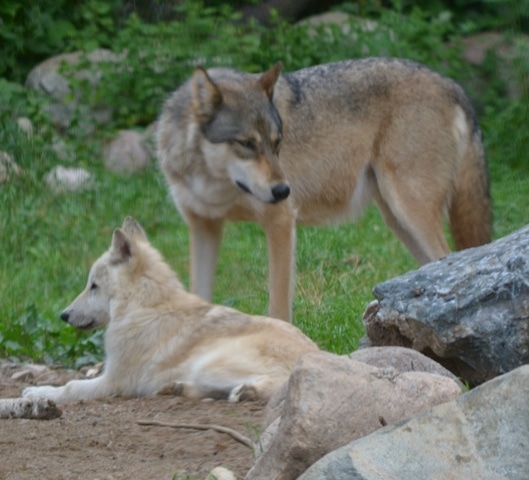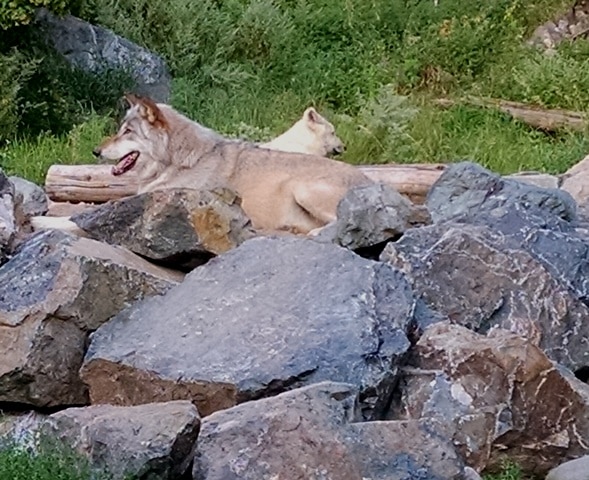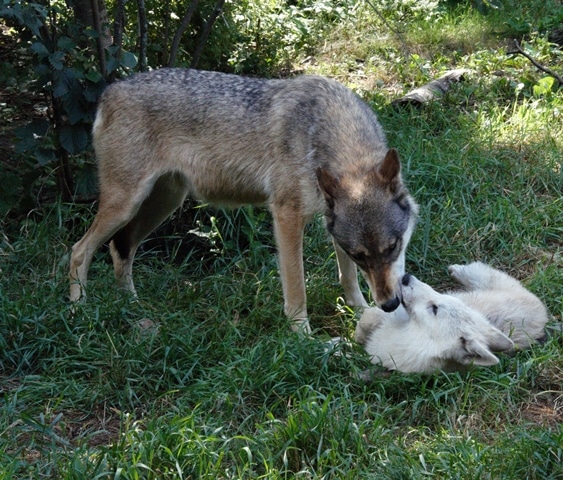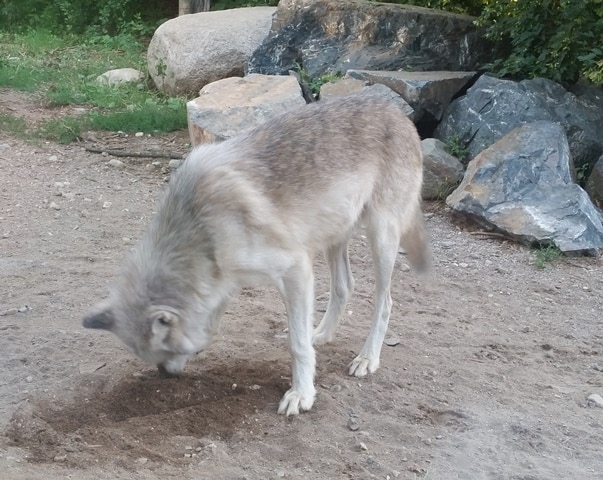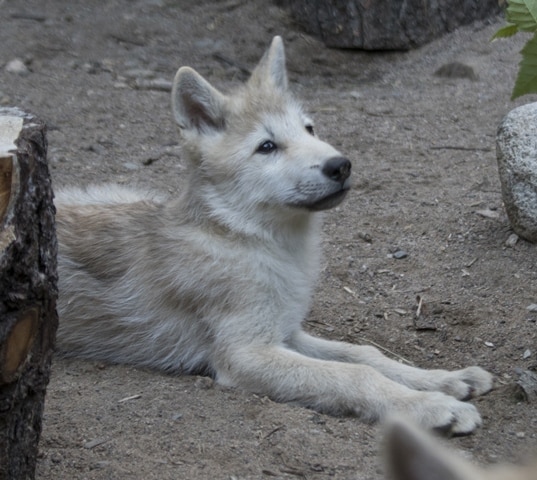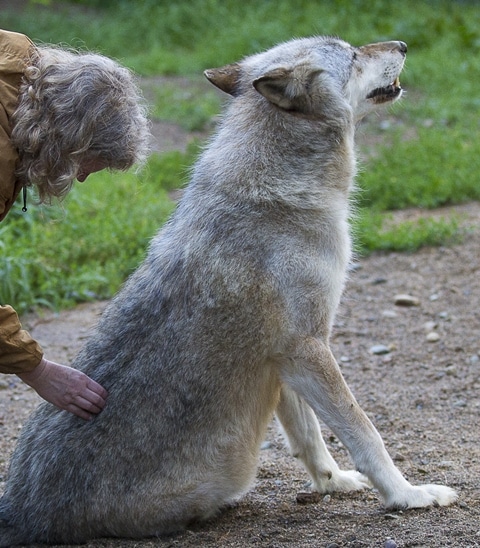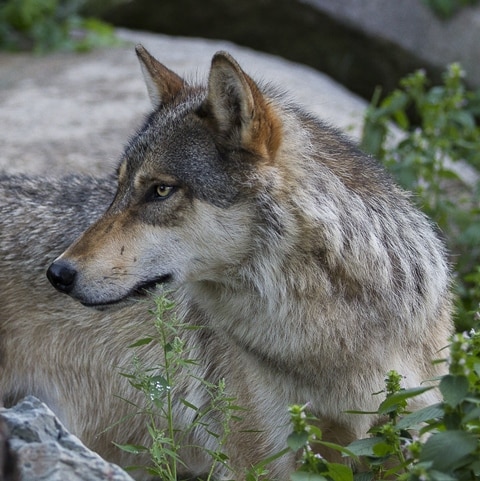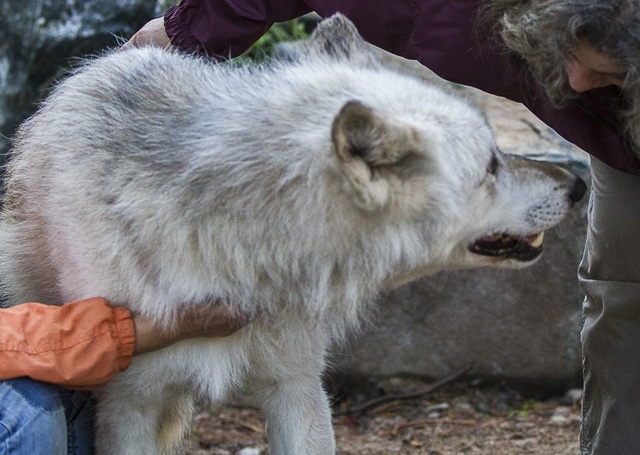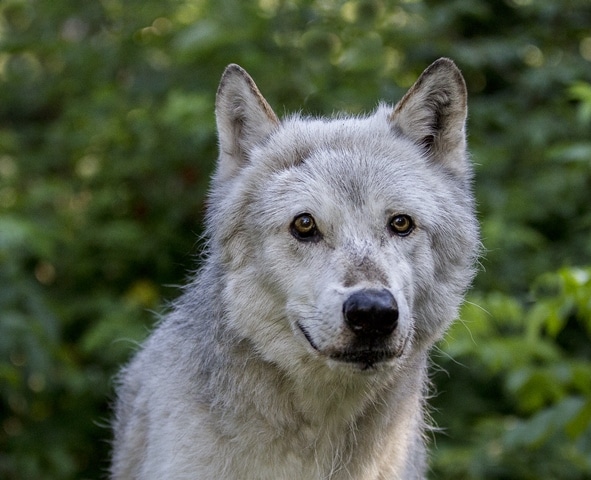This week’s wolf logs are written by behavioral team members Patty Kierski, Savannah Harness, and Kathy Kneeland based on their observations during the first week of introduction.
Boltz has been more actively interested in the pups since their introduction. He has been playful and seeks out time with the pups. He is spending more time with them than the other pack members. Boltz’ behavior has changed dramatically since the introduction, probably more than the other pack members.

